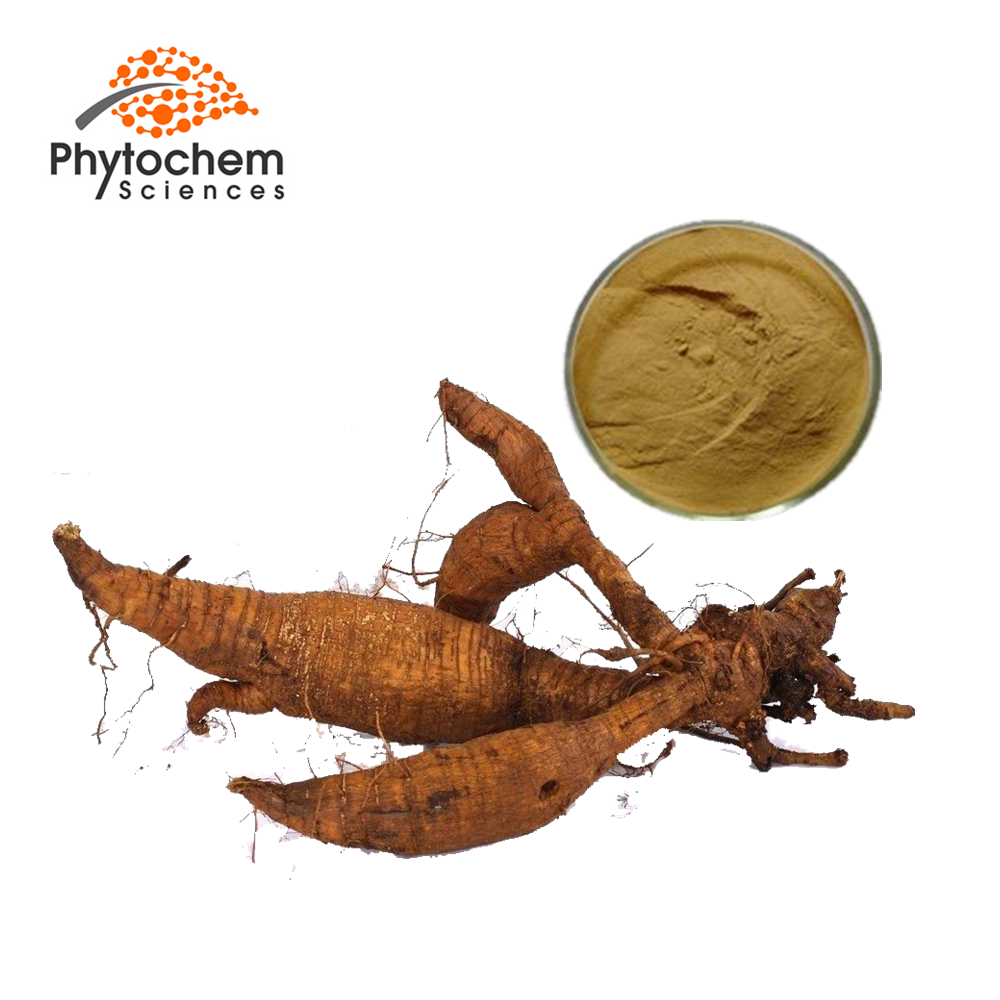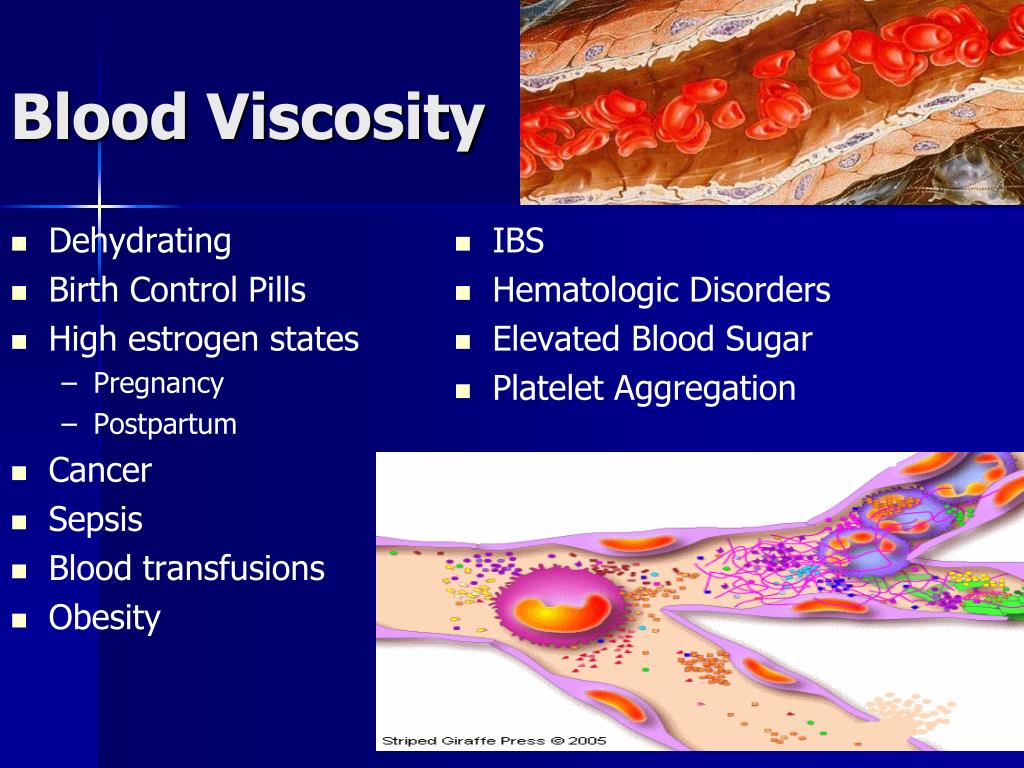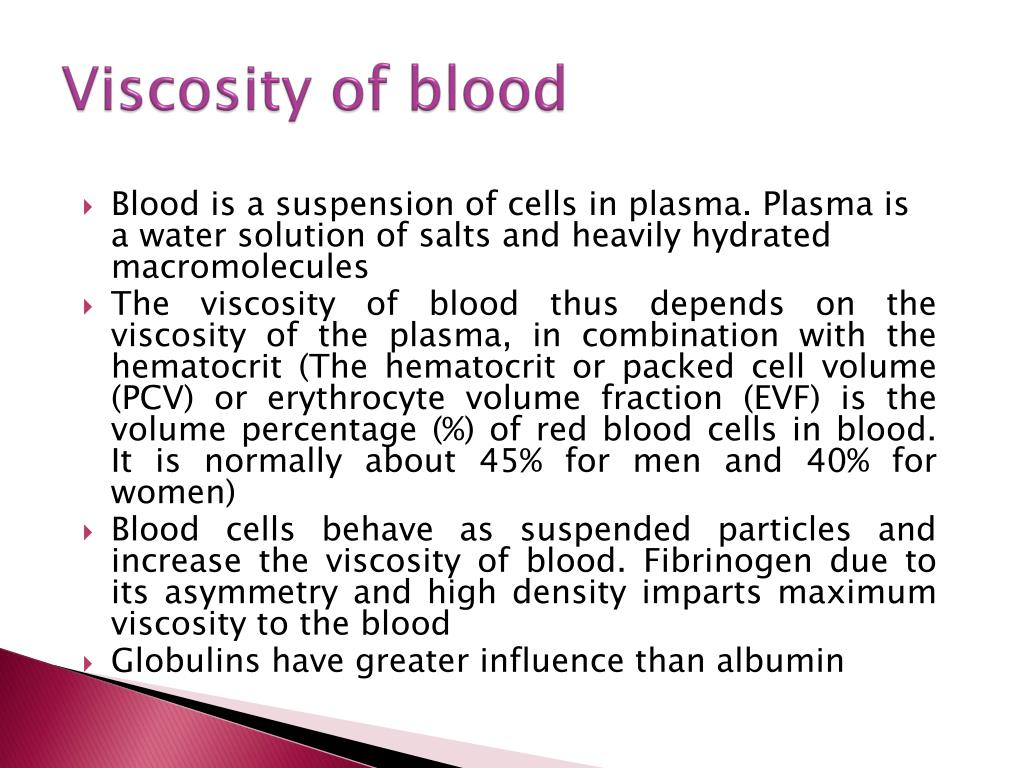

Deformability of erythrocytes: mean diameter of capillaries is generally <5 μ, while mean diameter of red blood cells is 7-8 μm. Hemoconcentration: Concentration is often accompanied by increased blood viscosity. In case of loss of a lot of water, not only changes in viscosity, but also is accompanied by a decrease in blood pressure and imbalanced homeostasis, so it is necessary to add physiological solutions to the body Blood viscosity is sub-par Depending on many different factors such as: Number of cellular components: polycythemia vera or thrombocytosis or a severe increase in white blood cell count can increase blood viscosity. Viscosity increases when the body loses water due to diarrhea, loss of sweat during labor or sudden cold. Normal value of blood viscosity is 2.3 - 4.1 centipoise at 37 degrees Celsius. Viscosity of blood is related to many co-morbid diseases with thrombotic complications.īlood viscosity is determined by red blood cells and plasma protein composition. If blood viscosity increases, it will make blood can not flow freely in arteries, reduce blood flow to organs such as heart, kidneys, brain. The viscosity of blood is 4-6 times that of water, it depends on the number of red blood cells.

Physical and chemical properties of blood characterized by density of blood, viscosity, osmotic pressure.

Blood maintains osmotic pressure and acid-base balance. Blood protects the body through white blood cells, antibodies and a buffer system, participates in the regulation of body functions and chemical processes thanks to its ability to transmit hormones. Blood plays an important role in the process of respiration, transporting O2 from the lungs to cells and tissues, and bringing CO2 from the cells to the lungs to be eliminated. The main functions of blood are protection, excretion, regulation and nutrition. Blood circulates inside the veins and arteries and performs many important physiological functions. Blood tissue consists of blood cells called red blood cells, white blood cells, platelets, and extracellular fluid called plasma. Additionally, increasing the number of low-cholesterol, fiber-rich foods you eat each day will aid in weight loss.Blood is a red liquid tissue, salty taste, formed together with the vascular system, is an important organizational component of the body, the volume of blood is 1/13 of the body weight.

Another option is to take blood pressure medication. A suitable blood thinner to use is heparin. Some simple measures can help lower your blood viscosity for those who have already been diagnosed with heart disease. Besides to reducing your cholesterol, statin drugs may also be prescribed to decrease your blood's viscosity. Reduce cholesterol by eating less fat and more fiber-rich foods. This type of exercise will reduce the amount of blood flow to your body, thus decreasing your blood viscosity. The blood cholesterol-lowering exercise you've been told to do if you have coronary artery disease is fibrinolytic exercise. The two primary methods for lowering your blood viscosity are using drugs (i.e. Reducing the blood viscosity increases heart efficiency, reducing the risk of heart attack or stroke. So, as myoglobin content increases, the heart's viscous blood content decreases, resulting in faster heart rates. The higher the concentration of myoglobin, the more concentrated the blood. Myoglobin is found in the hemoglobin, which carries oxygen-carrying red blood cells. Myoglobin is a complex of proteins that handles blood cell volume and their ability to transport oxygen and nutrients. Increasing the volume of blood cells that are pumped into the body. Additionally, it helps strengthen the heart muscle, thereby reducing the risk of cardiac arrest or heart failure. This enables the heart to pump more blood and receive more oxygen, which improves cardiac function. Reducing the level of cholesterol and other lipids in the blood vessels, and maintaining the normal mobility of blood cells, accomplishes this. Reducing blood viscosity helps to prevent cardiovascular diseases and death due to heart disease. Many diseases and pharmaceutical medications are effective in managing low blood viscosity. several pathogenic processes can use alterations in the properties of blood. Changes in the blood's viscosity affect the arterial perfusion. Within certain limits, proper blood flow can only occur. Viscosity in the blood is associated with atherosclerosis, stroke, heart disease, peripheral artery disease, and varicose vein disease.


 0 kommentar(er)
0 kommentar(er)
